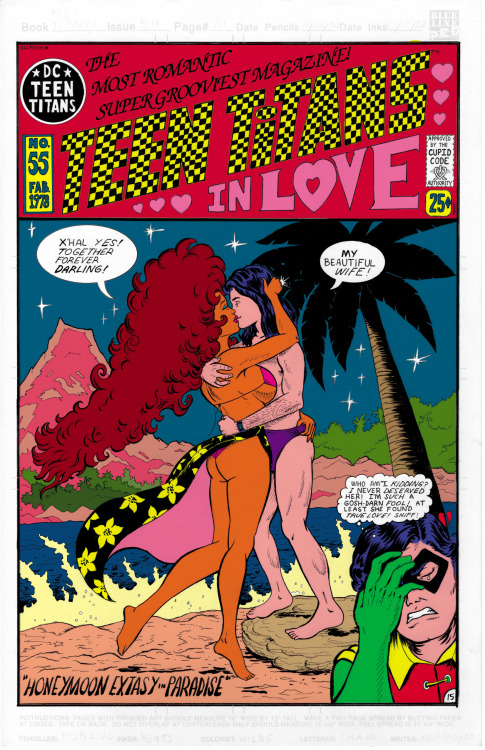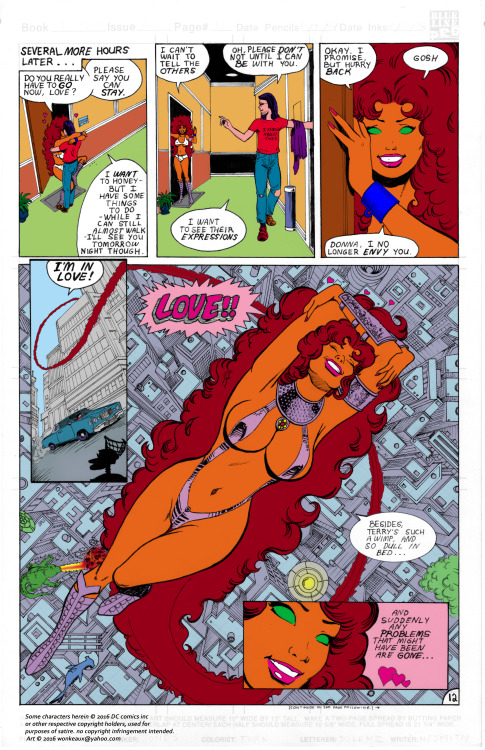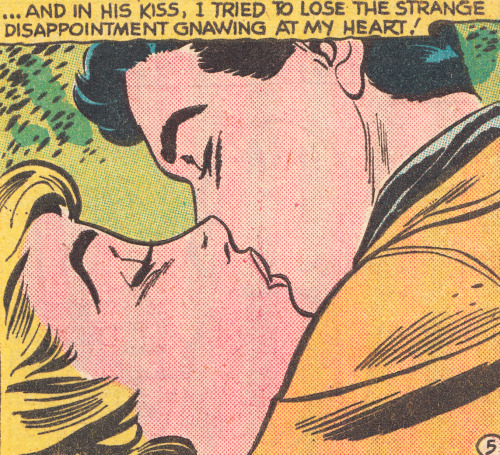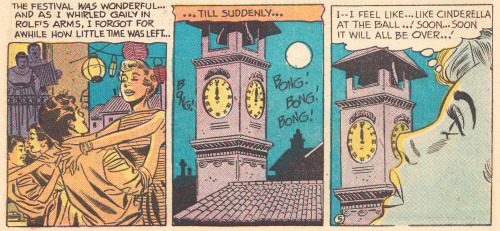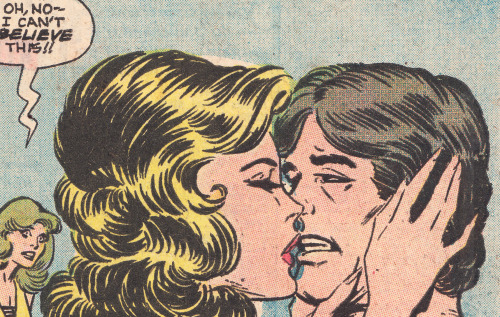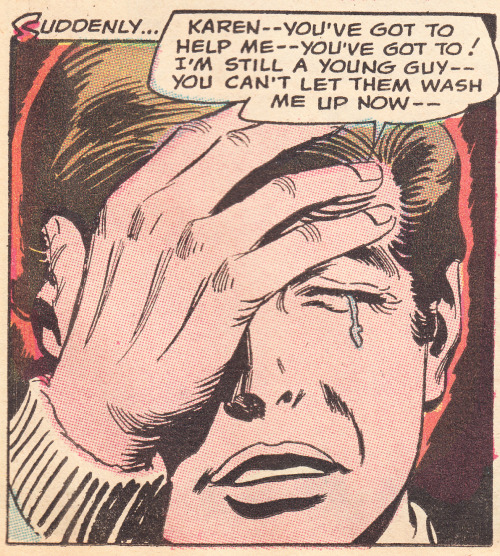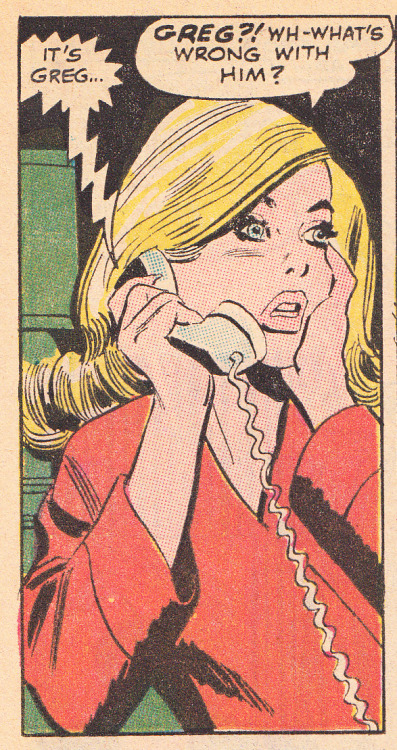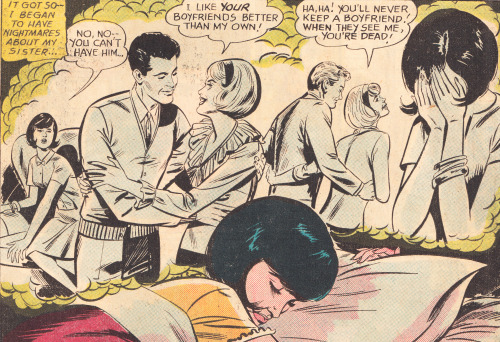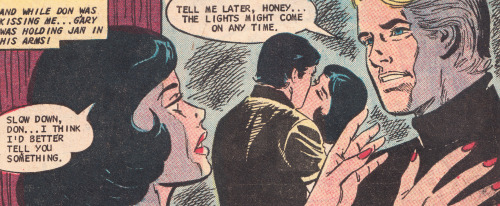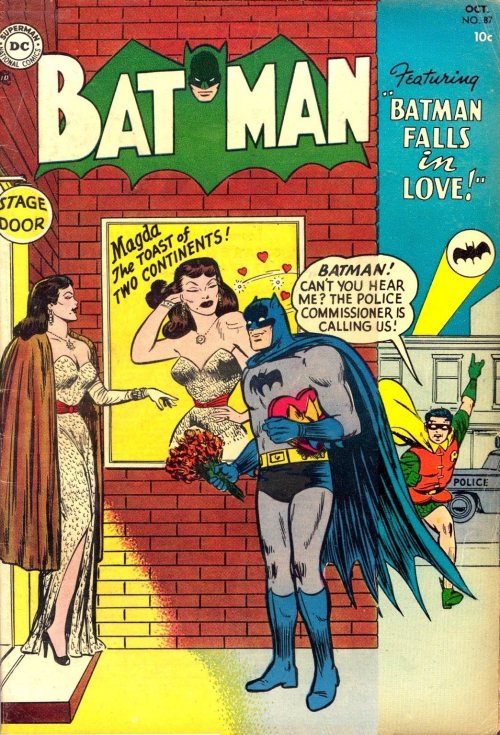#romance comics


Wrote a yaoi in my dreams accidentally
Teen Titans 55 cover, now in colour. hmm, Kori looks a little sunburned, which shouldn’t really be possible for a species that photosynthesises. maybe I grabbed the wrong orange. oh well, wow ok the colour looks radically different on my pc than it does in this tumblr preview mode, wtf? oh I had it in cmyk not rgb, d:
I have done a few variant colour jobs on this, including some old school ben-day colour dot versions I’ll be posting, if I haven’t already.
next page https://wonkeaux.tumblr.com/post/158001469223/teen-titans-54-page-16-aka-teen-titans-55-page
First page (cover, page 0): https://wonkeaux.tumblr.com/post/156560000597/at-last-in-colour-20-years-in-the-making-the
linework version of this page https://wonkeaux.tumblr.com/post/157881319247/teen-titans-55-the-sequel-to-54-page-0-cover
previous page https://wonkeaux.tumblr.com/post/157839745570/teen-titans-54-page-14-last-page-but-the-story
I reblog someone else’s thing, 427 notes. I post my own work, 1 or 2 notes. yay tumblr.
Post link
Teen Titans 54 page 12. now in colour, sorry for the 20 year wait. this was a LOT of work.
next page https://wonkeaux.tumblr.com/post/157755048401/teen-titans-54-page-13-in-colour-sorry-about-the
First page (cover, page 0): https://wonkeaux.tumblr.com/post/156560000597/at-last-in-colour-20-years-in-the-making-the
linework for this page: https://wonkeaux.tumblr.com/post/157588741743/teen-titans-54-page-12-linework-man-copying-that
previous available page: https://wonkeaux.tumblr.com/post/157546808665/teen-titans-54-page-10-in-colour-first-bit
Post link
Golden and Silver Age romance comics have long languished in a kind of postmodern carbonite, frozen in mainstream consciousness as images of tearful women in Roy Lichtenstein paintings, held in ironic disregard that often seems born of both feminism and misogyny (depending on whether one is judging the perceived messages sent by the often-male creators, or their intended audience as is often the case with media aimed at teen girls). The fact that the genre endured–and at one point even dominated the comics market–for about 30 years means that it is usually “graciously” afforded a cursory overview in most comics history books, and not much else. But could a whole genre of comics really have endured for so long with ultimately so little to offer?
For almost a decade, Jacque Nodell has been answering that question, finding and sharing forgotten gems of vintage romance comics on her blog, Sequential Crush, showing time and again that that was very much not the case. Romance comics not only often contained mature human drama that the rest of the medium lacked for decades after their own popularity had waned, but frequently conveyed positive, sometimes even empowering, messages to young girls that remain relevant to this day.
It is for that reason that Nodell has pulled together the best of the romance comics’ version of the letter column, the advice column, for her book How to Go Steady. Presented as both a collection and a history, the book aims to shake up the view of romance comics of the ‘60s and ‘70s as mere cultural artifact and offer up certain timeless pearls of wisdom. And it’s capped off with an afterword by former Marvel romance advice columnist (that’s a phrase I’m sure you never thought you’d read), Suzan Loeb of “Suzan Says”!

Charmingly illustrated by Jenny Cimino, the art’s retro aesthetic encapsulates the spirit of Silver Age romance comics for modern audiences, rather than aping Pop Art detachment.

And it’s endorsed by Stan Lee!
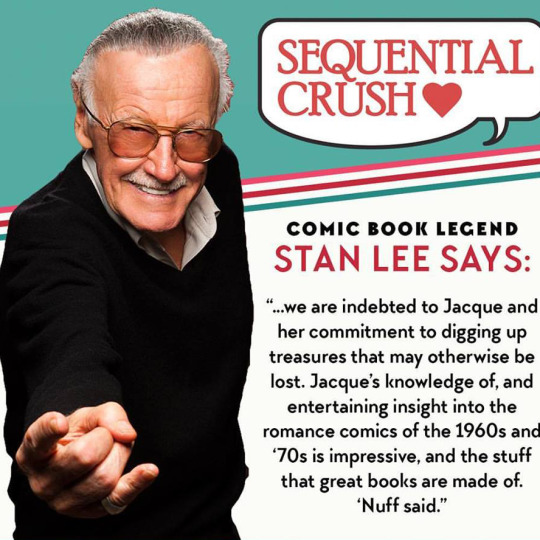
But if you want to get your hands on a copy, you’ll have to act fast– the book’s Kickstarter has just under 4 days to go and is not quite half-funded. At just $20 for an eBook or $35 for a print+eBook bundle, it’s a great deal for a fun and worthy project! (And if you’re a retailer, there’s still nine retailer packages left– 10 books for $175!) Even better, a full third of the total goal is earmarked to pay Jenny Cimino for her illustrations, so not only would you be helping preserve a forgotten slice of women’s comics history, you’ll also be directly supporting a modern female artist!
I personally pledged $250 to this book and pulled myself out of semi-blogtirement to encourage, implore, entreat, and flat-out beg you to give whatever help you can by Wednesday, 9:40 am EST, to make this book a reality. What more needs to be said?
For samples of what Nodell has worked so hard to bring to modern audiences, check out the “Advice Column” tag on the Sequential Crush blog.
Post link
Love Not Found is a series exploring themes of love and intimacy in an era when humans choose to forego physical contact similar to The Naked SunandDemolition Man.
It features a sweet, sincere main character who smiles through her own emotional difficulties and a richly developed ensemble cast with multiple LGBTQ+ couples. Fans of Steven UniverseandSailor Moon will enjoy the strong themes of love, friendship, and romance that are at the very core of the series!
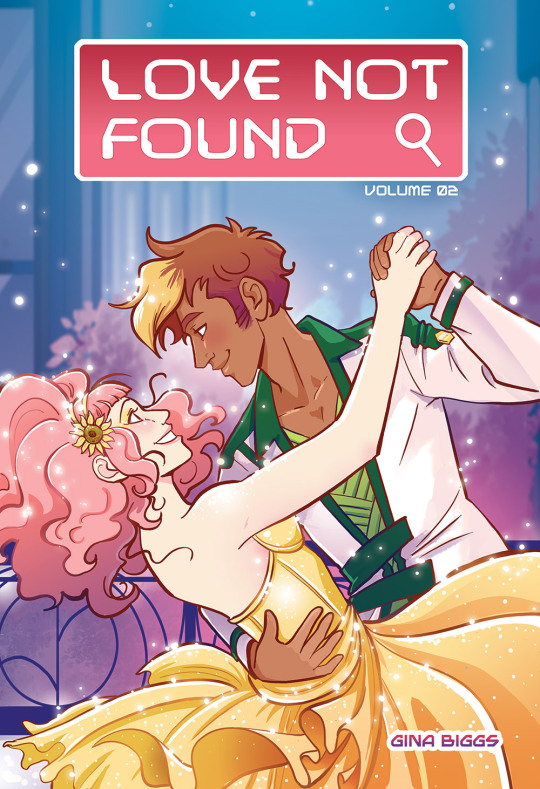
This Kickstarter campaign is funding the second volume of Love Not Found (collecting chapters 8-14 of the series).
The book will contain nearly 300 pages of FULL COLOR comics and bonus content including concept art, story notes, and character bios.
Additionally, It will see Standby Mode in print as well as other unique Love Not Found bookmarks, stickers, prints and more!
————————————————————————–
Love Not Found Vol.2 - Kickstarter launches June 22!
————————————————————————–
Visit the Official Project Page for Love Not Found volume 2 and click the “Notify on Launch” button to be notified as soon as the campaign launches!
Backing the book early helps a campaign tremendously! You will only be billed after the campaign concludes and the funding goal is met.
Spreading the word about the project is a FREE way you can help in a huge way! If you enjoy the series, are excited to check out this project, and/or end up backing it tell your friends and social media acquaintances!
COMICS CRASH COURSE - EPISODE 8 is LIVE!
In this week’s episode I explore the genres outside of superhero books that helped make the Golden Age so very shiny. I spend a little extra time discussing the great forgotten genre of comic books, the romance comic.
ON THE GOLDEN AGE, GENERALLY
- Collecting these books is out of the question for most of us, but there are a lot of great ways to read Golden Age material. One source I’ve frequently turned to is Comic Book Plus. Since most of the non-superhero books are now in the public domain, it’s safe to post them online…and that’s just what this site has done! The link I’ve provided goes to the “categories” page, which is a little bit of an easier way to start digging in.
- Pappy’s Golden Age Comic Blogzine is less an organized archive than Comic Book Plus, but still regularly posts covers and whole stories from Golden Age books. He’ll often work in theme, so there’ll be a period of war books, a period of horror, some romance, etc. Follow the tags and you’re sure to find great stuff!
- Most histories of the Golden Age focus on the superheroes–that was where a lot of the most well-known artists were working and would be the main genres of the biggest surviving companies (DC and Marvel–though it was called Timely, then). A few good ones: Bradford Wright’s Comic Book Nationexamines the role comic book industry has had in shaping youth culture. Men of Tomorrow: Geeks, Gangsters, and the Birth of the Comic Book by Gerard Jones is one of the most compelling re-tellings of the birth of the industry; as deeply researched as it is well-written. If you want some really nitty-gritty stuff, check out Ian Gordon’s Comic Strips and Consumer Culture, 1890-1945.
ROMANCE COMICS
- Oh man, there are a lot of great anthologies of classic romance comics! Start with Young Romance: The Best of Simon & Kirby’s Romance Comics,Love Without Tears: 50′s Romance Comics With A Twist, and Agonizing Love: The Golden Era of Romance Comics. These’ll get you going.
- There are two great, accessible histories. The first, Love on the Racks: A History of American Romance Comics by Michelle Nolan, is an overview of the genre from the 40s to the 70s. The second, Confessions, Romances, Secrets, and Temptations: Archer St. John and the St. John Romance Comics, is a dive into St. John, a publisher that’s less widely known but highly regarded by romance comic fans as one of the best publishers in the history of the genre. The publisher was active primarily in the 1950s, so the book provides a closer look at the industry during the height of the genre.
- Spend some time on Sequential Crush! This site focuses a bit more on 60s and 70s romance comics, but it’s a lot of fun.
MISCELLANY
I only briefly mentioned Carl Barks, but the man wrote A TON of Disney comics. He was lovingly called “The Good Duck Artist” by fans for many years. He’s a huge deal among comics aficionados, and rightly so. His work truly is lovely–the sort of comic book cartooning that makes drawing and storytelling look effortless and easy, but almost no one managed to match. This is an old website, and a little difficult to navigate, but it has tons of images to help give you an idea of his skill. Check out this beautiful essay written by Michael Barrier on the occasion of Barks’s 100th birthday.
That’s it for this week. Have fun, and keep reading!


